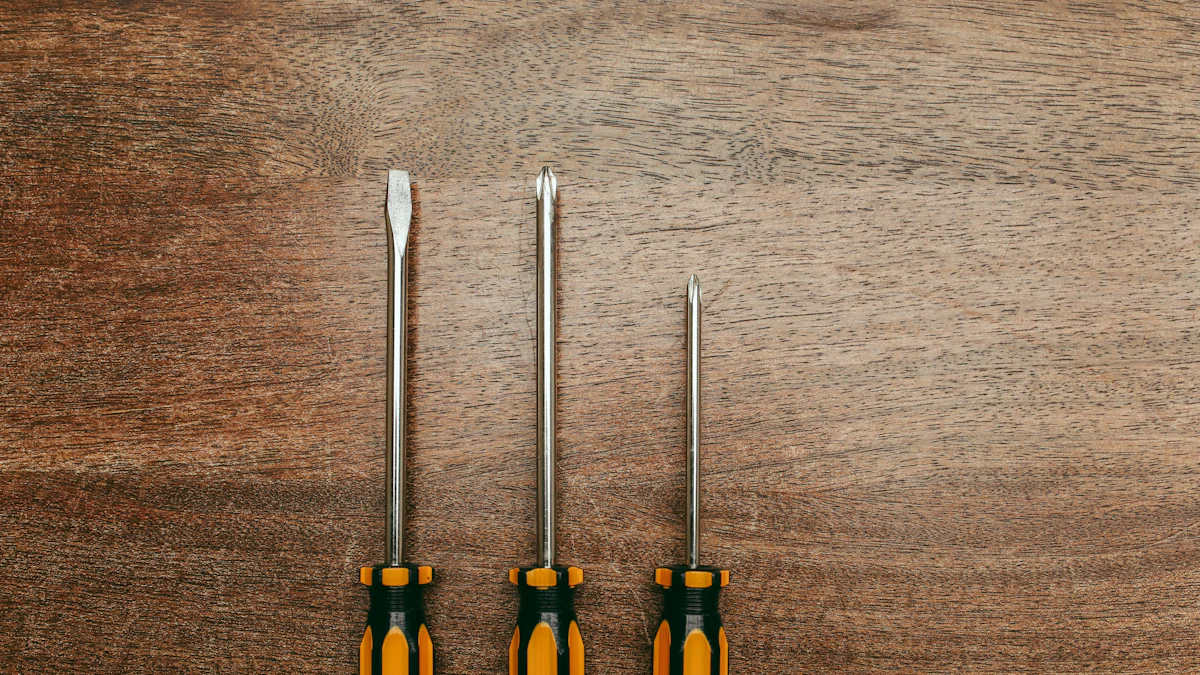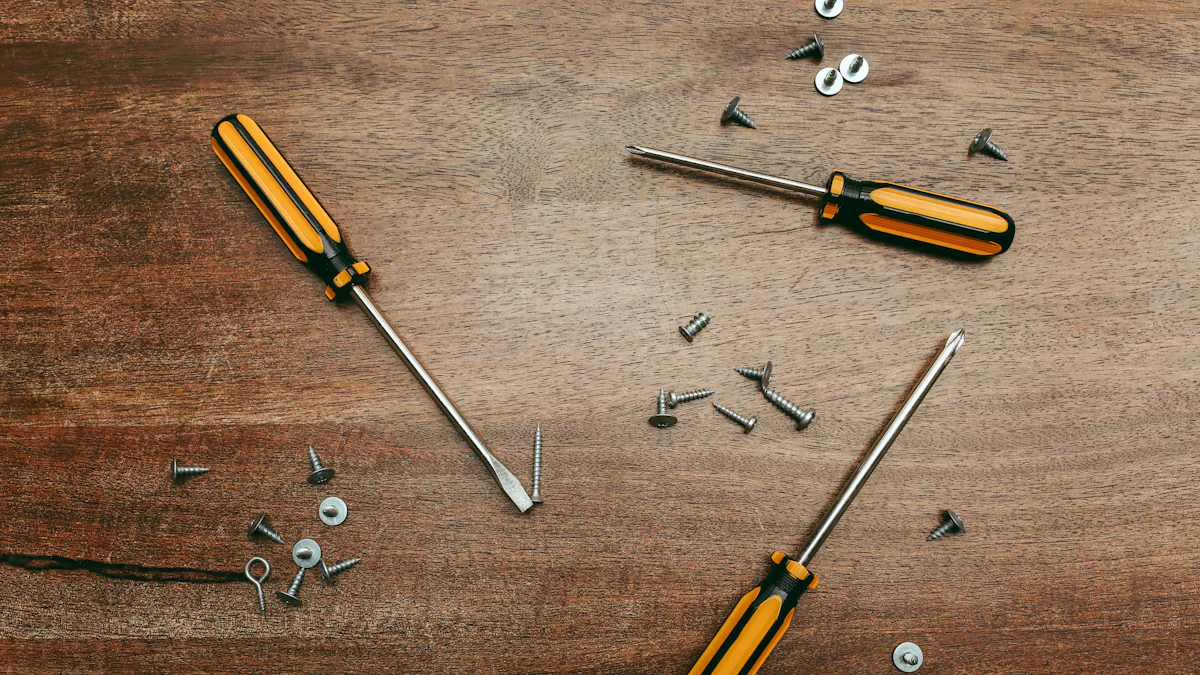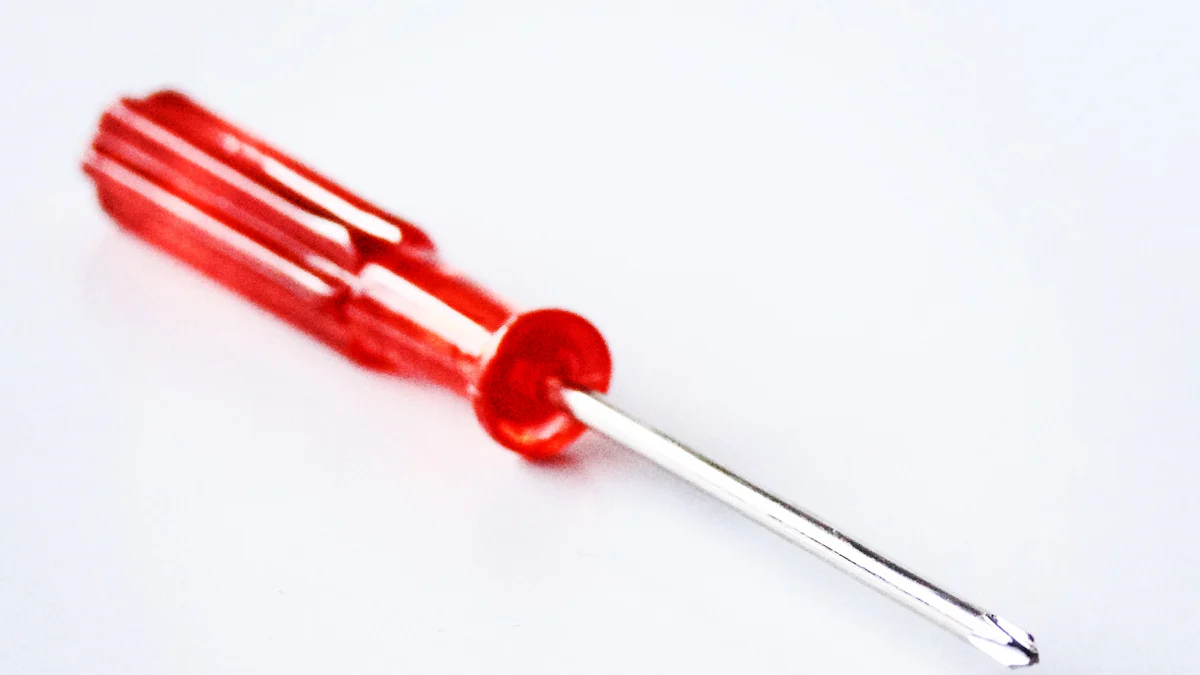
Using the right screwdriver ensures a secure and efficient fastening process. Phillips screwdrivers, invented by Henry Phillips in the early 1930s, have become essential tools in many industries. These screwdrivers provide greater torque and tighter fastenings. The #1 Phillips screwdriver, with its precision-machined tip and comfortable grip, suits small projects like crafting kits or jewelry boxes. This tool offers the accuracy and control needed for delicate tasks.
Understanding Phillips Screwdrivers

History and Development
Origin of the Phillips Screwdriver
John P. Thompson invented the Phillips screw and driver in 1932. This invention revolutionized assembly lines and became a necessity in every toolbox. Henry Phillips later refined the design, making it compatible with automated screwdrivers on assembly lines. This increased the speed of vehicle manufacturing and prevented screwdriver tip slippage.
Evolution and Modern Use
The Phillips screwdriver has evolved significantly since its inception. The original design allowed for greater torque and tighter fastenings. Modern Phillips screwdrivers now come in various sizes and materials, catering to different needs. The #1 Phillips screwdriver, for example, suits small projects like crafting kits or jewelry boxes. This tool offers precision and control, making it ideal for delicate tasks.
Types of Phillips Screwdrivers
Different Sizes and Their Uses
Phillips screwdrivers come in several sizes, each designed for specific tasks. The most common sizes include #0, #1, #2, and #3. Each size fits a particular range of screw heads. The #0 size works well with very small screws, often found in electronics. The #2 size is the most versatile, suitable for general household tasks. The #3 size handles larger screws, typically used in construction.
Specifics of the #1 Phillips Screwdriver
The #1 Phillips screwdriver fits screws sized 2, 3, and 4. This size has a 3 mm tip, making it perfect for small projects. High-quality #1 Phillips screwdrivers feature precision-machined tips that ensure a secure fit. Durable materials like steel provide longevity and reliability. Rubber grips on the handle offer better control, especially in oily or high-torque situations.
Factors to Consider When Choosing a #1 Phillips Screwdriver
Material and Build Quality
Importance of Durable Materials
Durable materials ensure the longevity of a #1 Phillips screwdriver. High-quality materials prevent wear and tear. Frequent use can cause screwdrivers to slip out of screws, especially at high torque. A durable tool withstands this stress and maintains performance.
Common Materials Used
Manufacturers often use steel for #1 Phillips screwdrivers. Steel provides strength and durability. Some screwdrivers feature chrome vanadium steel, which resists corrosion. Other options include stainless steel and tool-grade steel. These materials offer reliability and long-term use.
Handle Design and Comfort
Ergonomic Features
Ergonomic handles reduce hand fatigue during prolonged use. An ergonomic design fits the natural shape of your hand. This design minimizes strain and enhances comfort. Look for handles with contoured shapes and soft grips.
Grip and Control
A good grip ensures better control of the #1 Phillips screwdriver. Rubber grips provide a non-slip surface. This feature is crucial in oily or high-torque situations. A secure grip allows precise movements and reduces the risk of slipping.
Magnetic vs. Non-Magnetic Tips
Benefits of Magnetic Tips
Magnetic tips hold screws in place. This feature simplifies tasks that involve small screws. Magnetic tips prevent screws from falling and getting lost. They also make it easier to start screws in tight or awkward spaces.
Situations for Non-Magnetic Tips
Non-magnetic tips suit environments where magnets interfere with equipment. Electronics repair often requires non-magnetic tools. Magnetic fields can damage sensitive components. In such cases, non-magnetic tips provide a safer option.
Practical Applications of the #1 Phillips Screwdriver

Common Uses in Various Industries
Electronics and Small Appliances
The #1 Phillips screwdriver plays a crucial role in electronics repair. This tool fits screws found in devices like laptops, game consoles, and home theater systems. The precision-machined tip ensures a secure fit, preventing damage to delicate components. Using this screwdriver helps maintain the integrity of electronic devices during repairs.
Small appliances also benefit from the use of a #1 Phillips screwdriver. Devices such as blenders, toasters, and coffee makers often contain screws that match this size. The screwdriver’s design allows for easy access to tight spaces within these appliances. This makes it an essential tool for both professional technicians and DIY enthusiasts.
Furniture Assembly
Furniture assembly often requires the use of a #1 Phillips screwdriver. Many flat-pack furniture kits include screws that match this size. The screwdriver’s ergonomic handle provides comfort during extended periods of use. This reduces hand fatigue and improves efficiency.
Using a #1 Phillips screwdriver ensures that screws are properly seated. This prevents wobbling and enhances the stability of assembled furniture. High-quality materials in the screwdriver offer durability, making it a reliable tool for multiple projects.
Maintenance and Care Tips
Proper Cleaning Techniques
Maintaining a #1 Phillips screwdriver involves regular cleaning. Dirt and debris can accumulate on the tip and handle. Use a soft cloth to wipe down the tool after each use. For stubborn grime, apply a mild detergent and water solution. Avoid using harsh chemicals that can damage the tool’s surface.
Dry the screwdriver thoroughly to prevent rust. Pay special attention to the tip, as moisture can cause corrosion. Regular cleaning ensures the longevity and performance of the tool.
Storage Recommendations
Proper storage of a #1 Phillips screwdriver extends its lifespan. Store the tool in a dry, cool place to avoid exposure to moisture. Consider using a toolbox or drawer organizer to keep the screwdriver secure. This prevents damage from other tools and keeps the tip in good condition.
Magnetic strips or pegboards offer convenient storage options. These methods keep the screwdriver easily accessible while protecting it from wear and tear. Proper storage practices ensure that the tool remains reliable for future use.
Choosing the right #1 Phillips screwdriver ensures efficiency and precision in your projects. High-quality materials and ergonomic designs enhance performance and comfort. Magnetic tips simplify tasks involving small screws, while non-magnetic tips protect sensitive electronics. Consider your specific needs and preferences when selecting a tool. A well-chosen screwdriver can make a significant difference in the success of your work.
See Also
Scooter Upgrades: High-Quality Parts for Optimal Performance
Men and Women’s Sock Selection: A Diverse Range
